Abstract
The resistance of the lower esophageal sphincter to reflux of gastric juice is determined by the integrated effects of radial pressures exerted over the entire length of the sphincter. This can be quantitated by three-dimensional computerized imaging of sphincter pressures obtained by a pullback of radially oriented pressure transducers and by calculating the volume of this image, in other words, the sphincter pressure vector volume. Validation studies showed that sphincter imaging based on a stepwise pullback of a catheter with four or eight radial side holes is superior to a rapid motorized pullback. Compared with 50 healthy volunteers, the total and abdominal sphincter pressure vector volume was lower in 150 patients with increased esophageal acid exposure (p less than 0.001) and decreased with increasing esophageal mucosal damage (p less than 0.01). Calculation of the sphincter pressure vector volume was superior to standard techniques in identifying a mechanically defective sphincter as the cause of increased esophageal acid exposure, particularly in patients without mucosal damage. The Nissen and Belsey fundoplication increased the total and intra-abdominal sphincter pressure vector volume (p less than 0.001) and normalized the three-dimensional sphincter image. Failure to do so was associated with recurrent or persistent reflux. These data indicate that three-dimensional imaging of the lower esophageal sphincter improves the identification of patients who would benefit from an antireflux procedure. Analysis of the three-dimensional sphincter pressure profile should become the standard for evaluation of the lower esophageal sphincter.
Full text
PDF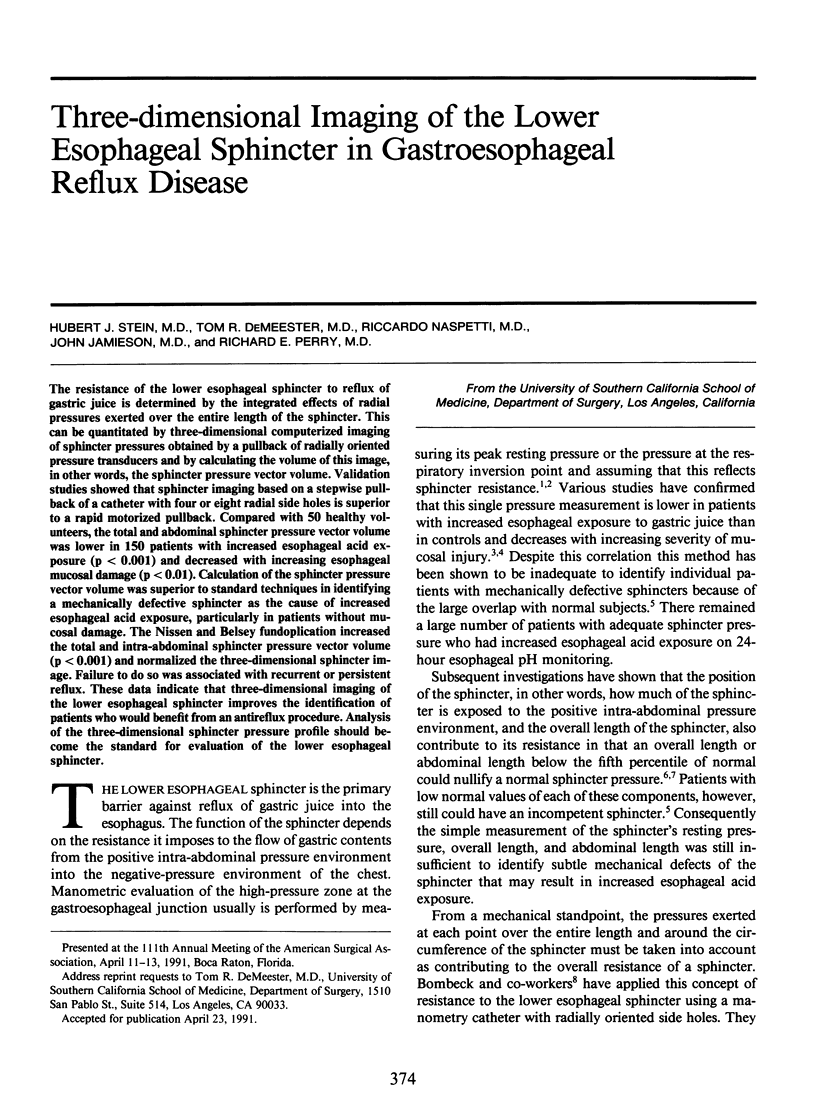

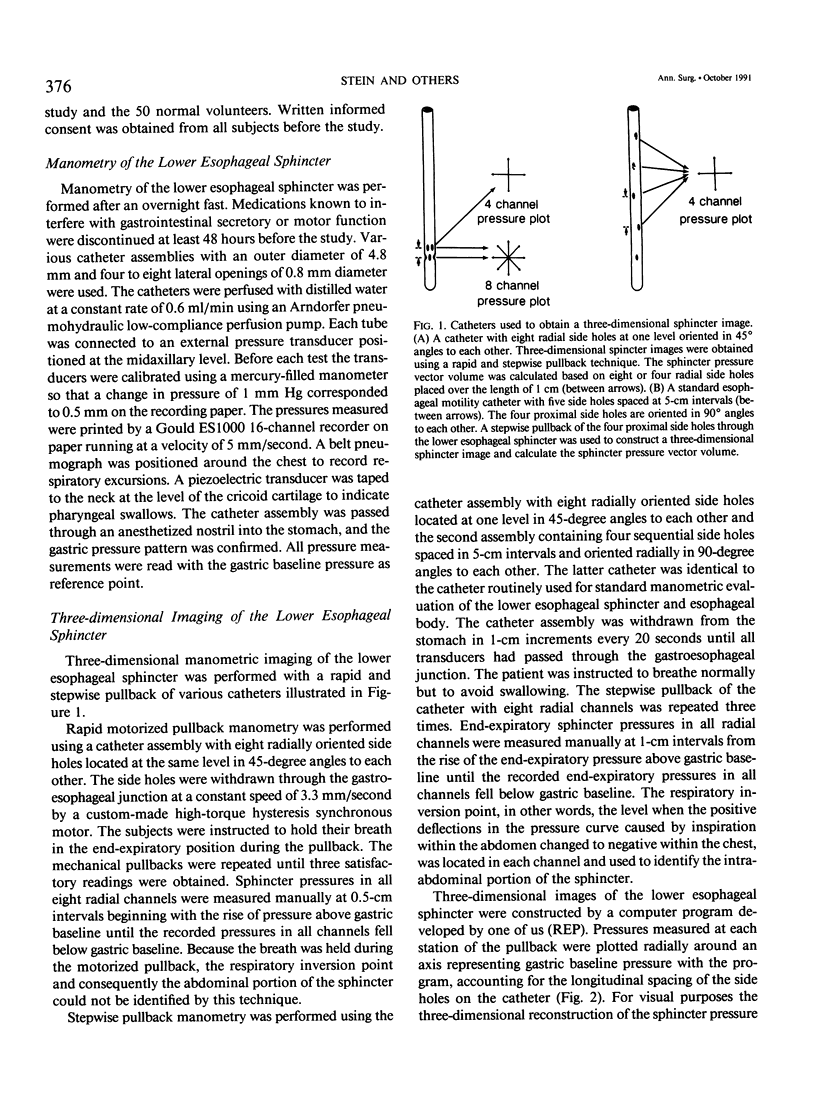
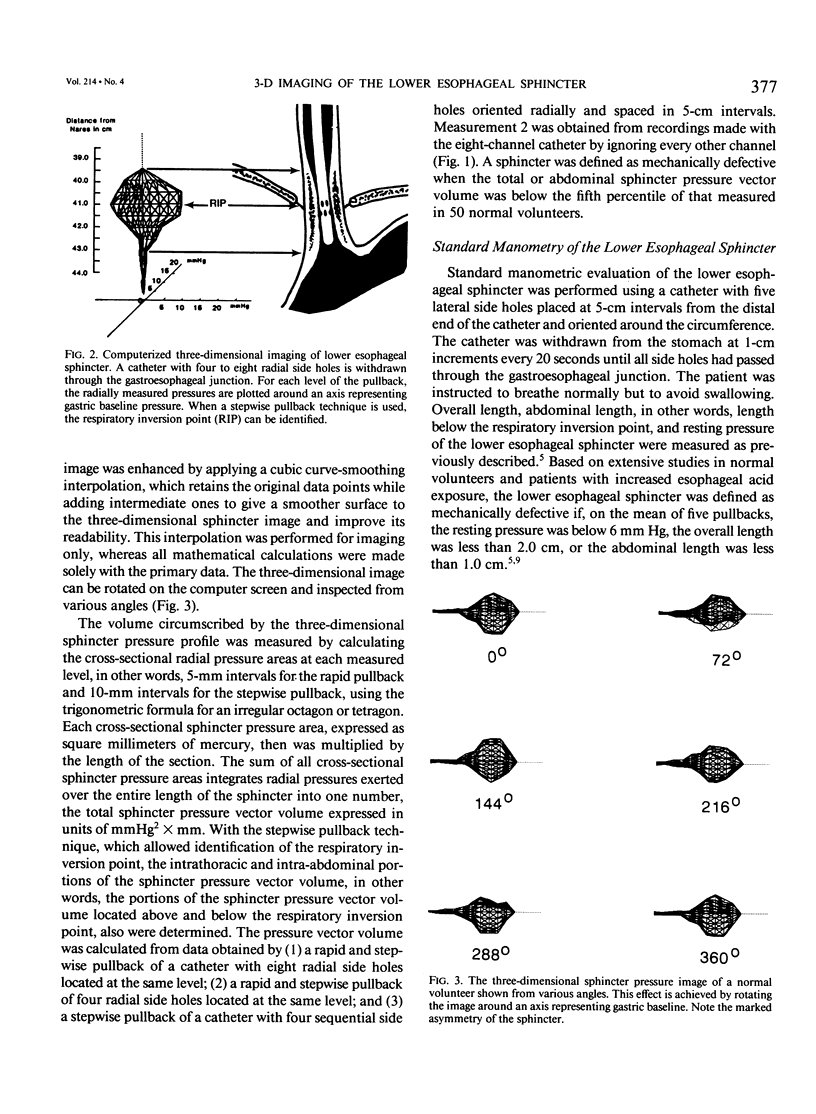

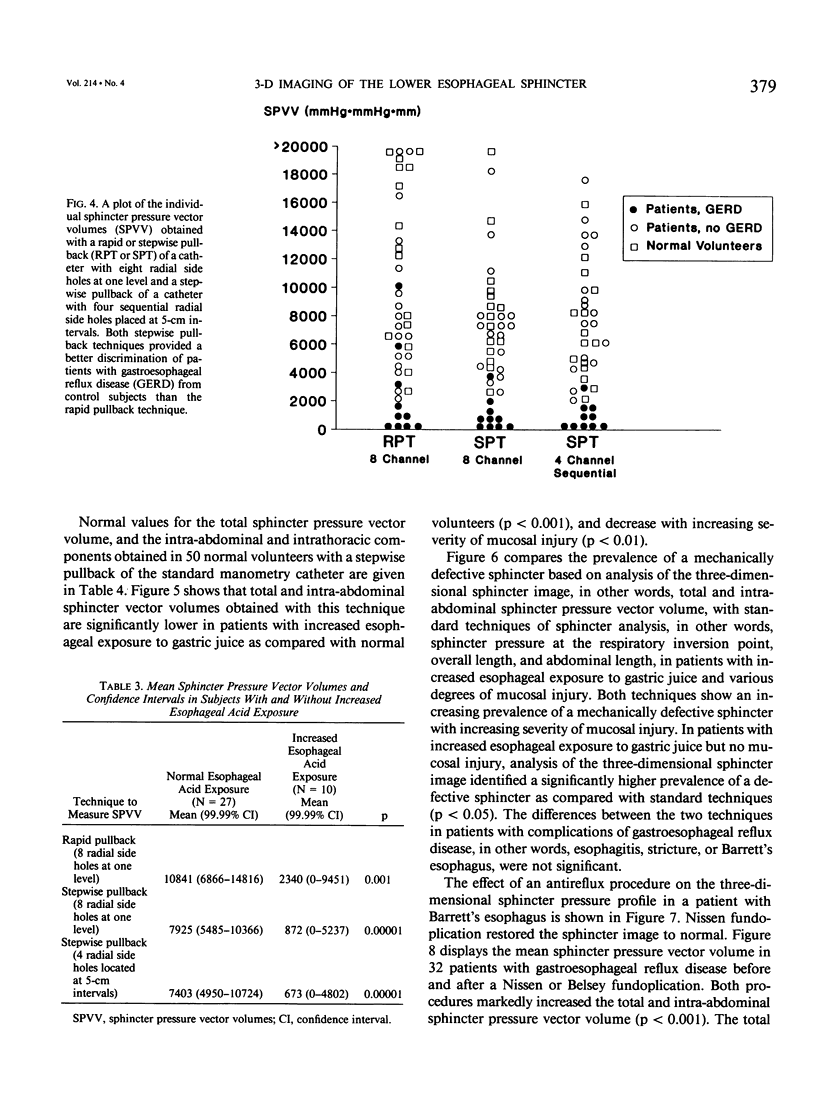
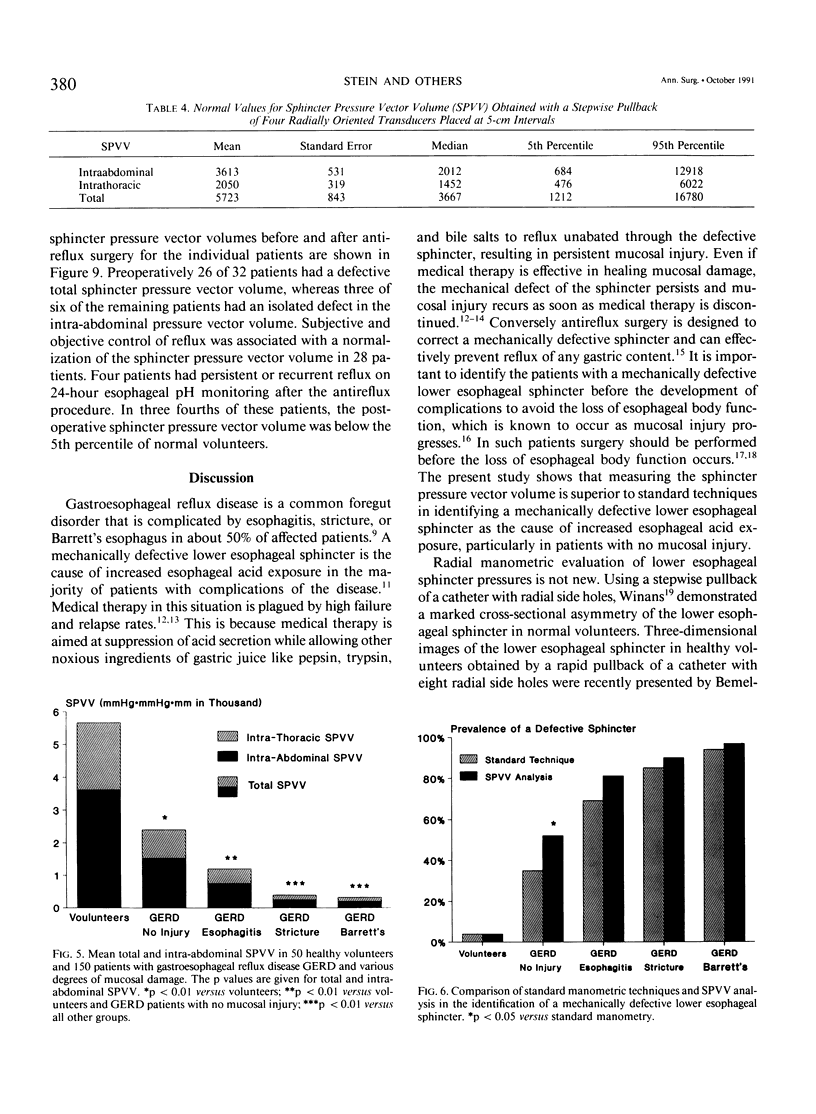
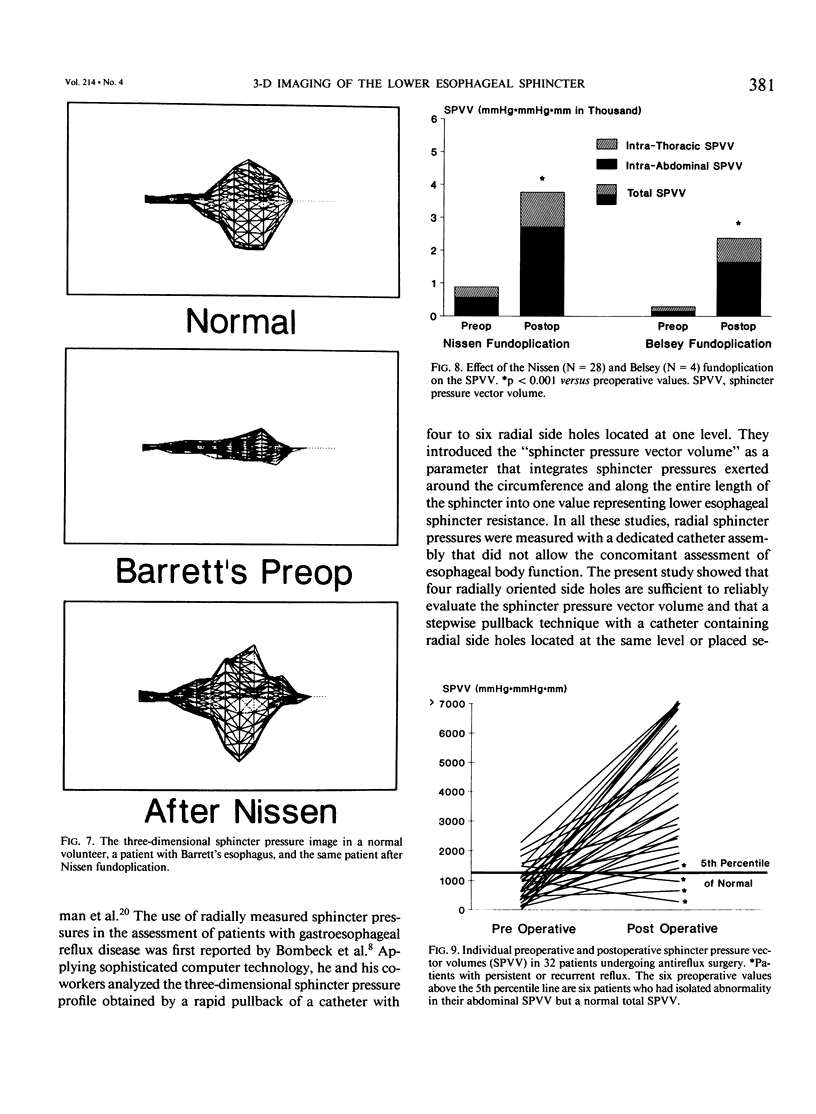
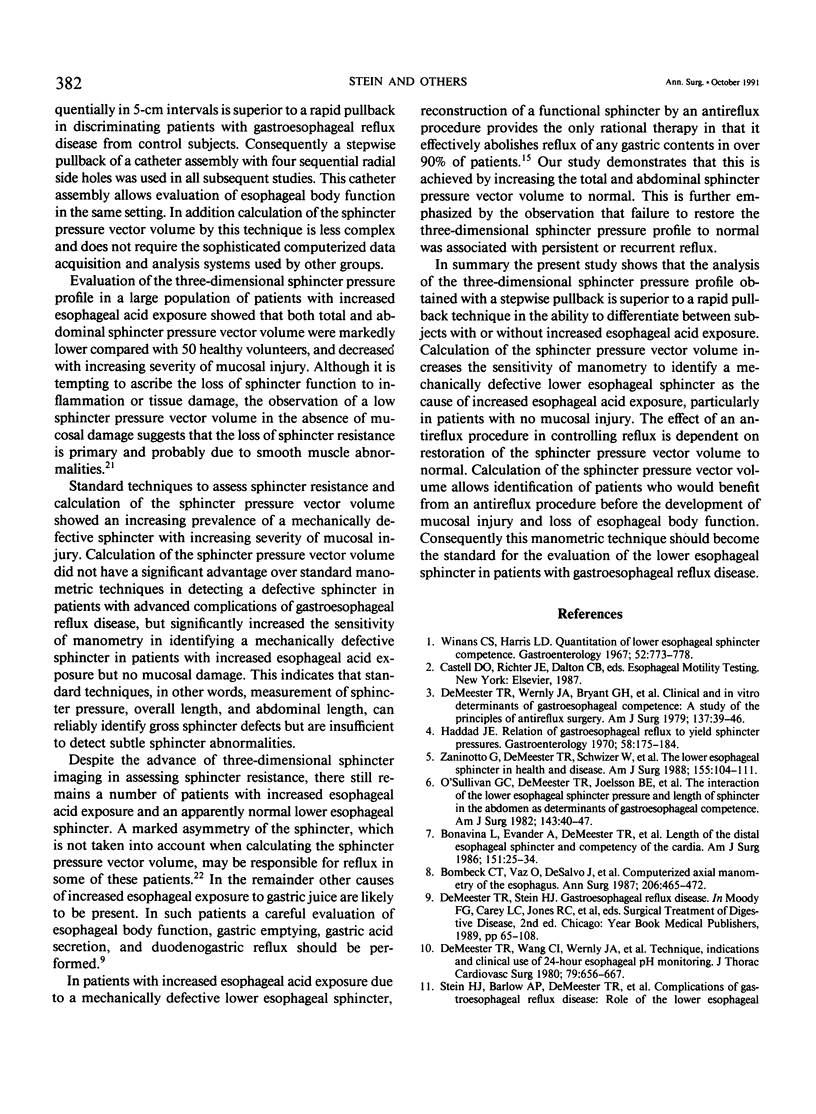
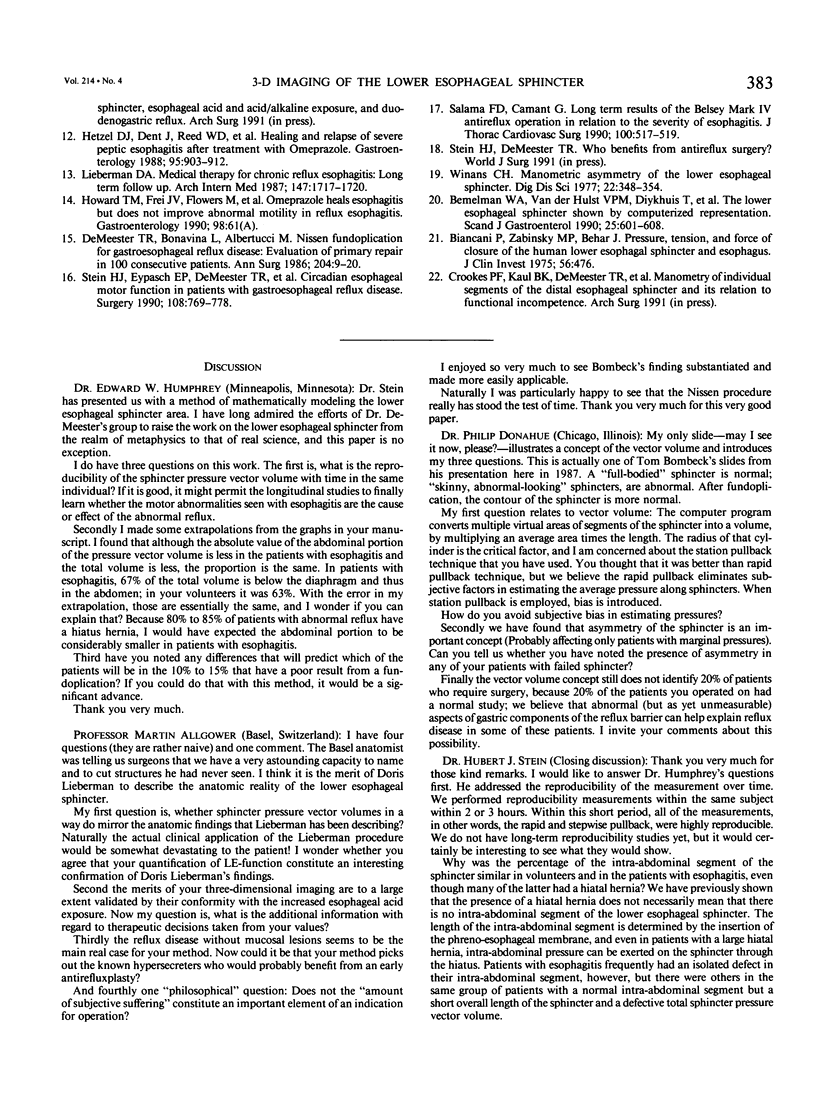
Selected References
These references are in PubMed. This may not be the complete list of references from this article.
- Bemelman W. A., van der Hulst V. P., Dijkhuis T., van der Hoeven C. W., Klopper P. J. The lower esophageal sphincter shown by a computerized representation. Scand J Gastroenterol. 1990 Jun;25(6):601–608. doi: 10.3109/00365529009095536. [DOI] [PubMed] [Google Scholar]
- Biancani P., Zabinski M. P., Behar J. Pressure tension, and force of closure of the human lower esophageal sphincter and esophagus. J Clin Invest. 1975 Aug;56(2):476–483. doi: 10.1172/JCI108114. [DOI] [PMC free article] [PubMed] [Google Scholar]
- Bombeck C. T., Vaz O., DeSalvo J., Donahue P. E., Nyhus L. M. Computerized axial manometry of the esophagus. A new method for the assessment of antireflux operations. Ann Surg. 1987 Oct;206(4):465–472. doi: 10.1097/00000658-198710000-00007. [DOI] [PMC free article] [PubMed] [Google Scholar]
- Bonavina L., Evander A., DeMeester T. R., Walther B., Cheng S. C., Palazzo L., Concannon J. L. Length of the distal esophageal sphincter and competency of the cardia. Am J Surg. 1986 Jan;151(1):25–34. doi: 10.1016/0002-9610(86)90007-3. [DOI] [PubMed] [Google Scholar]
- DeMeester T. R., Bonavina L., Albertucci M. Nissen fundoplication for gastroesophageal reflux disease. Evaluation of primary repair in 100 consecutive patients. Ann Surg. 1986 Jul;204(1):9–20. doi: 10.1097/00000658-198607000-00002. [DOI] [PMC free article] [PubMed] [Google Scholar]
- DeMeester T. R., Wang C. I., Wernly J. A., Pellegrini C. A., Little A. G., Klementschitsch P., Bermudez G., Johnson L. F., Skinner D. B. Technique, indications, and clinical use of 24 hour esophageal pH monitoring. J Thorac Cardiovasc Surg. 1980 May;79(5):656–670. [PubMed] [Google Scholar]
- DeMeester T. R., Wernly J. A., Bryant G. H., Little A. G., Skinner D. B. Clinical and in vitro analysis of determinants of gastroesophageal competence. A study of the principles of antireflux surgery. Am J Surg. 1979 Jan;137(1):39–46. doi: 10.1016/0002-9610(79)90008-4. [DOI] [PubMed] [Google Scholar]
- Haddad J. K. Relation of gastroesophageal reflux to yield sphincter pressures. Gastroenterology. 1970 Feb;58(2):175–184. [PubMed] [Google Scholar]
- Hetzel D. J., Dent J., Reed W. D., Narielvala F. M., Mackinnon M., McCarthy J. H., Mitchell B., Beveridge B. R., Laurence B. H., Gibson G. G. Healing and relapse of severe peptic esophagitis after treatment with omeprazole. Gastroenterology. 1988 Oct;95(4):903–912. doi: 10.1016/0016-5085(88)90162-x. [DOI] [PubMed] [Google Scholar]
- Lieberman D. A. Medical therapy for chronic reflux esophagitis. Long-term follow-up. Arch Intern Med. 1987 Oct;147(10):1717–1720. [PubMed] [Google Scholar]
- O'Sullivan G. C., DeMeester T. R., Joelsson B. E., Smith R. B., Blough R. R., Johnson L. F., Skinner D. B. Interaction of lower esophageal sphincter pressure and length of sphincter in the abdomen as determinants of gastroesophageal competence. Am J Surg. 1982 Jan;143(1):40–47. doi: 10.1016/0002-9610(82)90127-1. [DOI] [PubMed] [Google Scholar]
- Salama F. D., Lamont G. Long-term results of the Belsey Mark IV antireflux operation in relation to the severity of esophagitis. J Thorac Cardiovasc Surg. 1990 Oct;100(4):517–519. [PubMed] [Google Scholar]
- Stein H. J., Eypasch E. P., DeMeester T. R., Smyrk T. C., Attwood S. E. Circadian esophageal motor function in patients with gastroesophageal reflux disease. Surgery. 1990 Oct;108(4):769–778. [PubMed] [Google Scholar]
- Winans C. S., Harris L. D. Quantitation of lower esophageal sphincter competence. Gastroenterology. 1967 May;52(5):773–778. [PubMed] [Google Scholar]
- Winans C. S. Manometric asymmetry of the lower-esophageal high-pressure zone. Am J Dig Dis. 1977 Apr;22(4):348–354. doi: 10.1007/BF01072193. [DOI] [PubMed] [Google Scholar]
- Zaninotto G., DeMeester T. R., Schwizer W., Johansson K. E., Cheng S. C. The lower esophageal sphincter in health and disease. Am J Surg. 1988 Jan;155(1):104–111. doi: 10.1016/s0002-9610(88)80266-6. [DOI] [PubMed] [Google Scholar]


